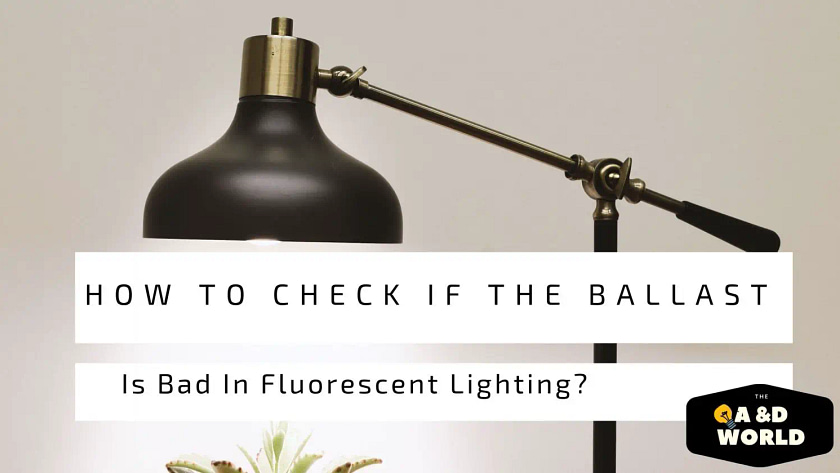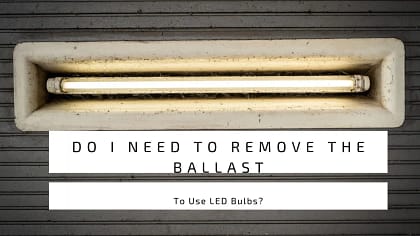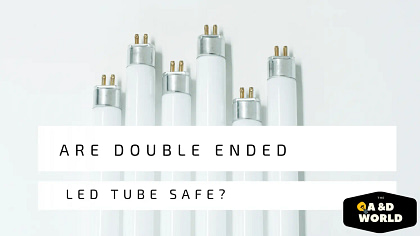Lighting is one of the most important aspects of your home. While most modern homes comprise LED lighting, fluorescent lighting still exists today. With fluorescent lights, the ballast or bulb can fail from time to time. Thus, this post will answer most of your questions on poor ballasts.
A ballast provides enough voltage to start up the lamp gradually by adjusting the current to produce enough power for a steady light. Therefore, if there is a buzzing sound, flickering lights, or your lamp no longer works, it’s a problem with the ballast. To fix the issue, check the ballast to ensure it works correctly.
For fluorescent bulbs, old age, poor dimmer compatibility, and bad ballast are some of the reasons they do not work.
If your ballast is bad, you will notice the signs below.
- Low output
- Flickering.
- Buzzing.
- Inconsistent lighting levels.
- Delay start.
How To Check If The Ballast Is Bad In Fluorescent Lighting?
- To check if the ballast is bad, turn off the fixture from the breaker panel.
- Take off the lens cover of the bulb by removing screws or by sliding the cover out of the fixture.
- The ballast is connected to the fixture via either a plug or socket, depending on the type of bulb.
- The U-shaped bulbs are held in place with springs to ensure tension.
- Remove the ballast cover.
Replace the ballast if it appears burned, swollen, or leaking. Touch the multimeter probe to the end of any of the ballast wires to see if the voltage is still present.
The ballast is likely to be bad if the voltage has gone away.
Testing A Ballast With A Multimeter
A multimeter is an instrument used to measure current, voltage, and resistance. Similarly, it can be analog or digital and typically has a variety of ranges. A multimeter is particularly helpful because it solves many electrical problems quickly and efficiently.
One way of testing a ballast is to measure the voltage with a multimeter. It should read 120 volts of electricity if the ballast is good. The needle on an analog multimeter will then sweep from one side of the scale to the other.
If the ballast is bad, then the needle won’t move. When using a digital multimeter for this task, the readout may say “1” when it doesn’t find a measurable resistance.
Ballast And Voltage
A ballast regulates the voltage of your fluorescent fixture so it can start up properly. Without it, a fluorescent light would keep increasing its power demand without a ballast.
Within seconds, the lamp would overheat or burn out. In the end, maintaining a steady light output is the key to long lamp life. Ballast is the only way to reduce the electric current and produce a consistent light.
The Difference Between Transformer And Ballast
Transformers are the middleman in the process of changing voltage and amperage. They literally “transform” electrical energy, whereas ballasts serve as short-term batteries, storing power and releasing it when needed.
If you look at the way fluorescent light works, they need a lot of power to get started and only require a little to keep going. The ballast provides consistent amperage and voltage for the gas molecules to produce light.
However, ballast stores more power than the device needs to regulate and provide stability. If you notice a fluorescent light flickering or “losing stability,” this often means that the ballast is going bad. In conclusion, a transformer converts voltage and amperage from one level to another. Ballasts provide a steady power supply.
The Lifespan of A Ballast
The lifespan of a ballast varies depending on the environment. The ballast will last longer if it is not exposed to hot, low humidity, and corrosive vapors.
If you have an open core with a starter, then it can last for 100 years. However, some people may have to replace their starter every ten years. Furthermore, a sealed core with a capacitor rapid start has a lifespan of 50 years and an electronic ballast of 30 years.
Causes of Ballast Failure
Fluorescent ballasts may fail prematurely, causing flickering, buzzing, slow startup, dimming, and inconsistent lighting levels. The culprit behind most ballast failures is the surroundings. Heat and moisture can harm your ballast. Hence, if the environment is too hot or cold, the ballast can burn and not start or produce little light.
Remember to check the manufacturer’s recommended temperature to ensure it can function in your home’s environment. Poorly wired ballast to the fluorescent lamp is another reason your ballast is malfunctioning. However, this occurs in new installations when you don’t know what you are doing.
If you have replaced your ballast, and the lamp is not operating as it is supposed to, check the wiring. Lastly, ballast can overheat and shut off as a result. So, wait a few mins to see if your lights come on and inspect your lamp surroundings or voltage.
Bad Fluorescent Bulb
The best way to troubleshoot a fluorescent bulb that’s not working is to start by checking the bulb itself by turning off the power, unscrewing it, and looking for any signs of damage. Look for dark spots near the end of the bulb. This is a clear sign of failure or old age.
Fluorescent bulbs are sensitive to voltage fluctuations.
If you have recently moved your fluorescent lamp, maybe the power supply isn’t strong enough to run it. For the homeowners who have a pair of tubes, if one is no longer in working conditions, they both will flicker. Therefore, it is best to replace both tubes.
A dimmer switch can also cause a fluorescent tube to not work properly. It is sometimes difficult to find a dimmer that is compatible with these bulbs because they have to be ballast-dependent. Further, combining incandescent with fluorescent bulbs on the same dimmer can be detrimental.
Above, we explore the reasons for bad ballast, but this can also cause the bulb to not work. A defective ballast means that the fixture has no way of regulating the current and will cause premature failure in the bulb.
To Sum,
The ballast is a vital part of your fluorescent lamp. When it goes bad, you’ll notice your light flickering, buzzing, etc. There are many reasons for a failing ballast, like too hot or cold environment, poor wiring, or overheating. Moreover, to check if your ballast is failing, use a multimeter.





